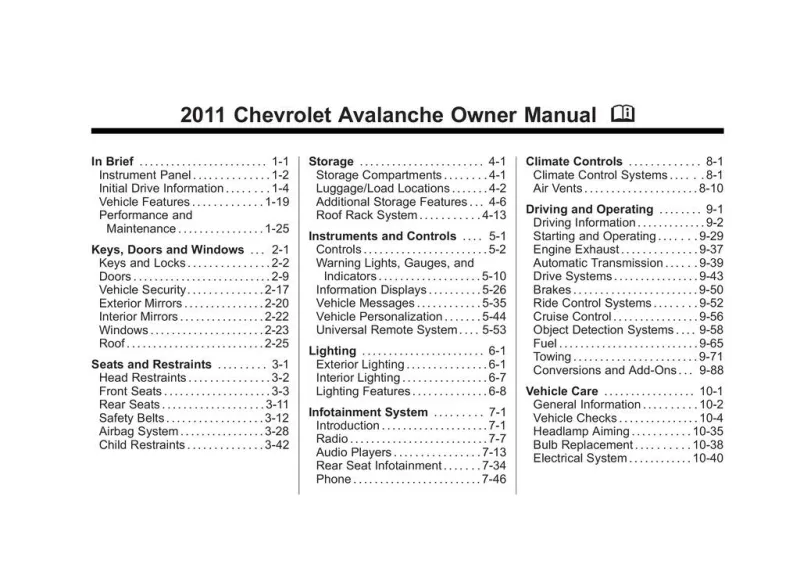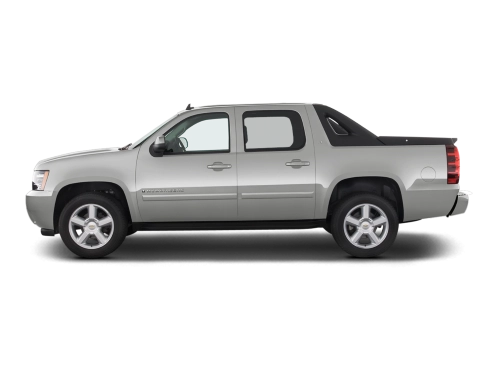2011 Chevrolet Avalanche Owner's Manual

Table of Contents
2011 Chevrolet Avalanche Overview
Introduction
The 2011 Chevrolet Avalanche is a versatile, rugged vehicle that seamlessly blends the practicality of a full-size SUV with the utility of a pickup truck. Known for its innovative design, this model features a unique mid-gate that allows for extended cargo space, making it perfect for active individuals and families who require flexibility in transport. With a strong presence on the road, the Avalanche exudes confidence and durability, making it an appealing choice for those who seek adventure combined with everyday utility.
Powertrains
The 2011 Avalanche is equipped with a robust 5.3-liter V8 engine that produces 320 horsepower and 335 lb-ft of torque, paired with a six-speed automatic transmission. An optional 6.0-liter V8 engine is available, which enhances performance with additional power, suitable for towing heavy loads. The Avalanche offers both rear-wheel drive and four-wheel drive configurations, allowing drivers to adapt to various terrains and weather conditions effortlessly.
Trims
This model comes in three well-equipped trims: LS, LT, and LTZ. The LS serves as the base trim, offering essential features and creature comforts, while the LT adds more luxury elements, including upgraded audio and seating options. The LTZ trim takes luxury to the next level, featuring premium leather upholstery, advanced technology, and enhanced safety features, giving buyers a range of choices to suit their preferences.
Features
The 2011 Chevrolet Avalanche is packed with practical features, including a versatile cargo management system, rear parking sensors, and an available touch-screen navigation system. Additionally, the cabin is spacious and designed for comfort, with ample legroom and a host of entertainment technologies. Safety is paramount, with options such as stability control, antilock brakes, and side curtain airbags, ensuring peace of mind for all occupants.
Owner's Manual
The owner's manual for the 2011 Chevrolet Avalanche provides invaluable information for maintaining and operating the vehicle. It contains detailed descriptions of features and functions, troubleshooting tips, maintenance schedules, and warranty information. Users can refer to this comprehensive guide to maximize their driving experience and ensure longevity for their Avalanche.
User manual download
The Chevrolet Avalanche owner manual for the 2011 model year is to be found in PDF downloadable format on this page. The owner manual for the model year 2011 is free and in English, but the repair manuals are usually not easy to get and may cost more.
Manual Questions
Fill the form below and someone will help you!

